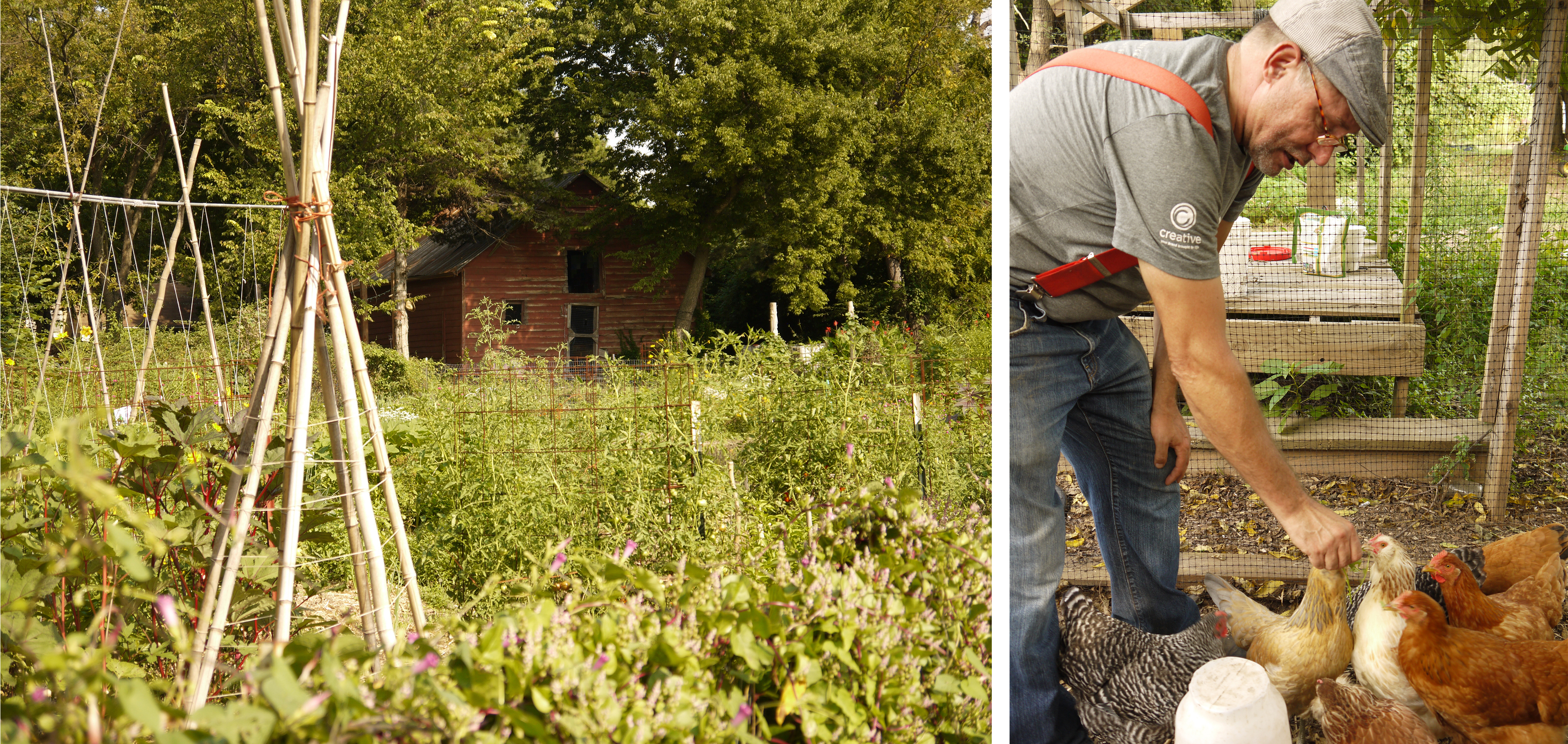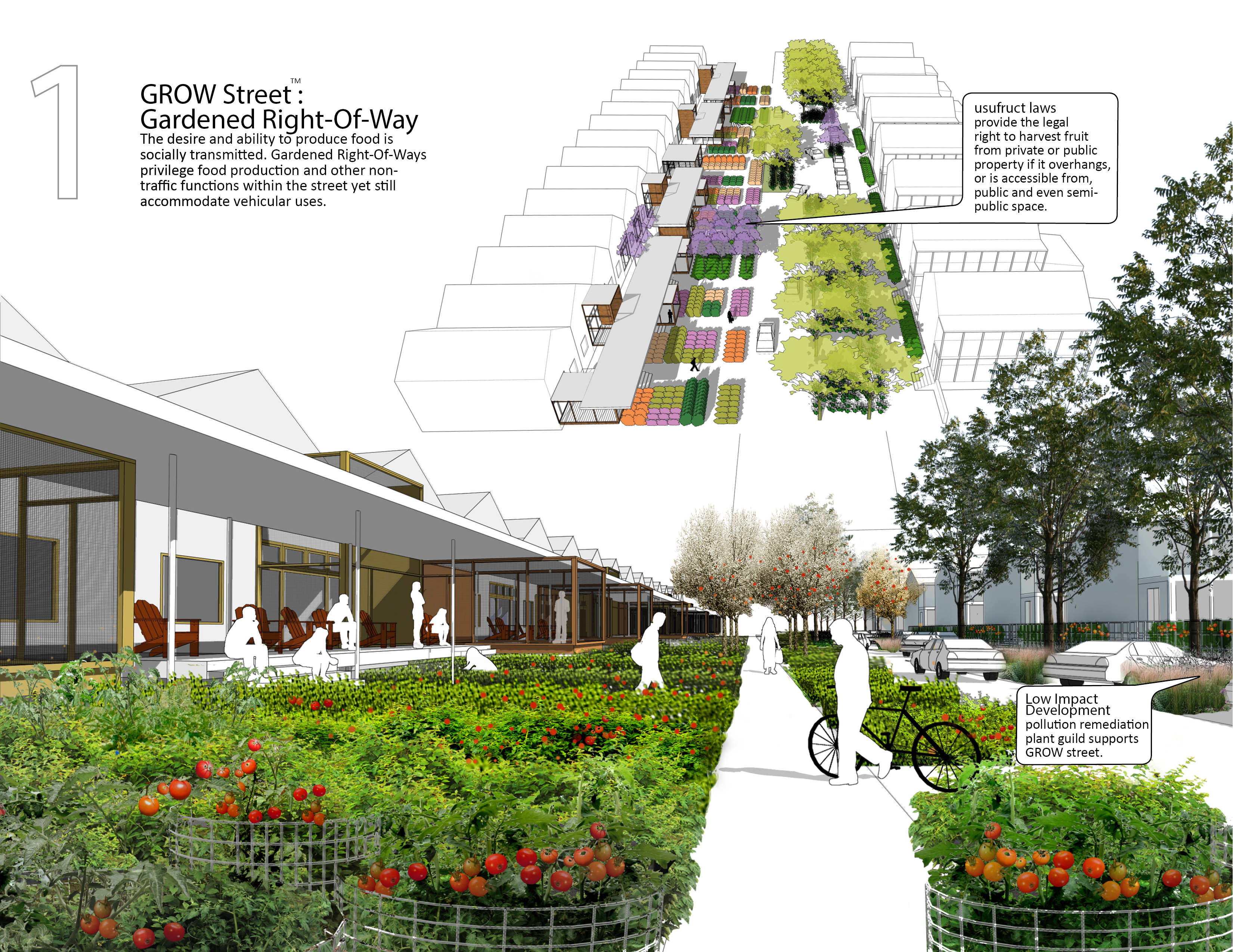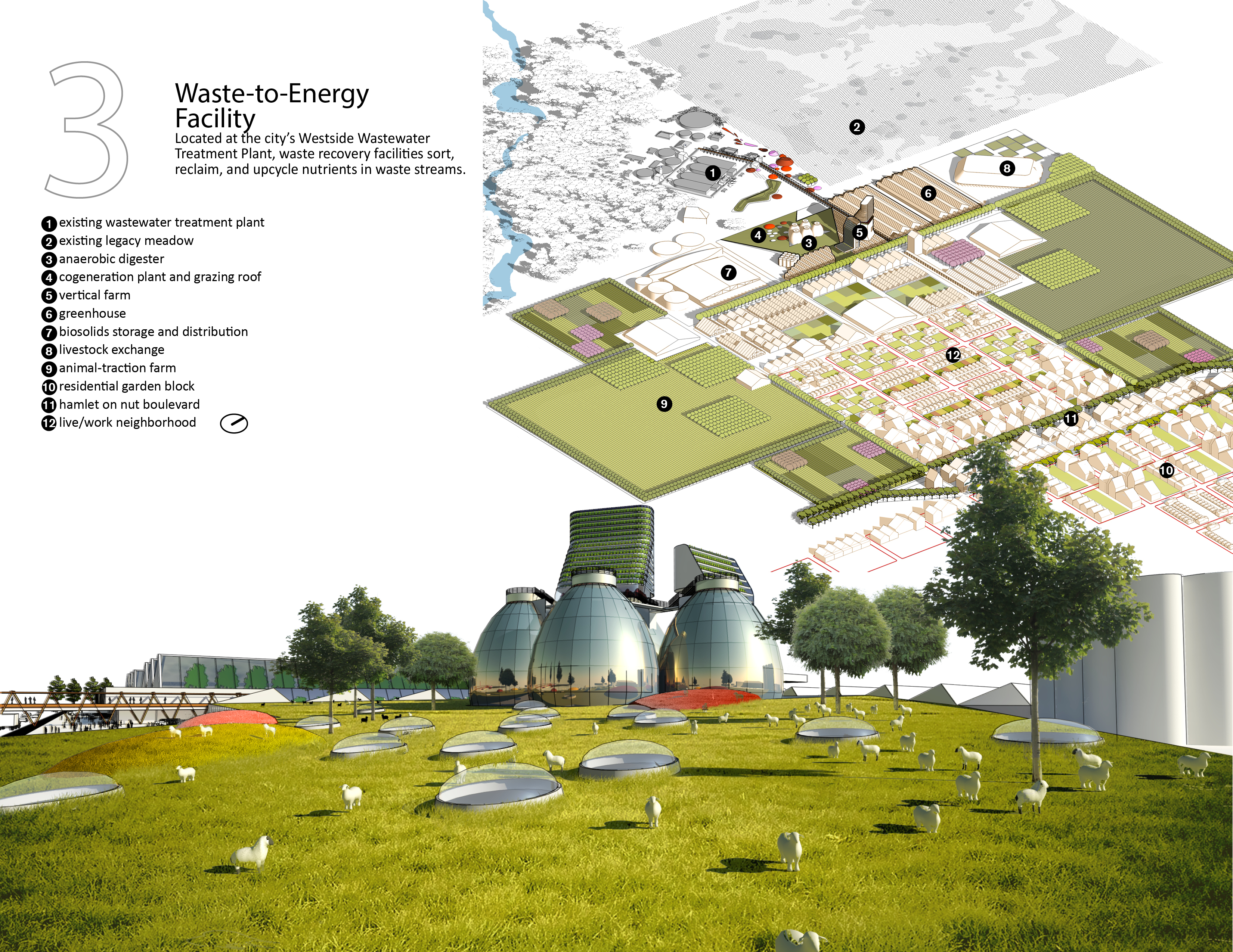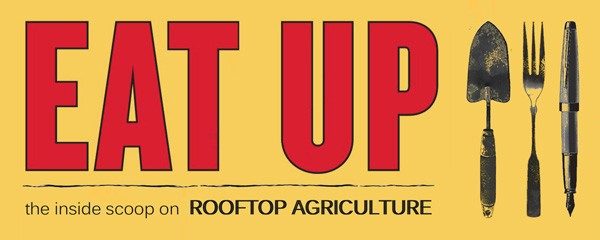food city scenario

Excerpt from “Fayetteville 2030: Food City Scenario” || Image by the University of Arkansas Community Design Center
What would your city look like if urban agriculture drove development? The University of Arkansas Community Design Center posed this question in 2012 when a team of designers, scientists, lawyers, and students explored what their rapidly densifying city of Fayetteville, AR would look like by 2030, the point at which the population is projected to double to approximately 140,000 residents. The team, led by Community Design Center director Stephen Loni, used scenario planning – a speculative process that anticipates how specific decisions will shape long-term realities – to develop “Fayetteville 2030: Food City Scenario,” or Food City, as it’s better known. This visually enticing project depicts a future Fayetteville that prioritizes food security and food localization as organizing elements of urban growth. Food City has earned national recognition by winning multiple awards, including an ASLA 2015 Professional Honor Award, and appearing as the subject of a feature article in Landscape Architecture Magazine‘s January 2016 issue, written by EAT UP author Lauren Mandel.

Tri Cycle Farms and permaculture farmer Don Bennett || photo by Lauren Mandel
“When you’re trying farm farmers and grow growers, it’s all about accessibility,” says Fayetteville urban farmer Don Bennett, who founded Tri Cycle Farms in 2011. Don and his flock of volunteers, many of whom are food insecure, cultivate nearly 2-acres of land in the city’s geographic center using permaculture techniques. Don is part of a growing food localization movement in Fayetteville that focuses in large part on food equity and access. Other local, budding establishments that help bring fresh, nutritious food to Fayetteville’s residents include Feed Fayetteville (a food security non-profit), Apple Seeds Teaching Farm (a hands-on agricultural education site), The Farmer’s Table Cafe (a popular farm-to-table restaurant) and the Fayetteville Farmers’ Market (which was established in 1973 and is now the largest producer and vendor market in Arkansas).

Excerpt from “Fayetteville 2030: Food City Scenario” || Image by the University of Arkansas Community Design Center

Excerpt from “Fayetteville 2030: Food City Scenario” || image by the University of Arkansas Community Design Center
Do you want to learn what’s on-tap for Fayetteville’s transforming food system and read more about the people behind the movement? Check out “The Next Meal” in Landscape Architecture Magazine‘s digital January 2016 issue or pick up the print edition at your local Barnes & Noble store before mid-February.
 EAT UP
EAT UP
This is so fascinating Lauren!
I’m glad you’re interested, Sandee! Food system planning is fascinating work.